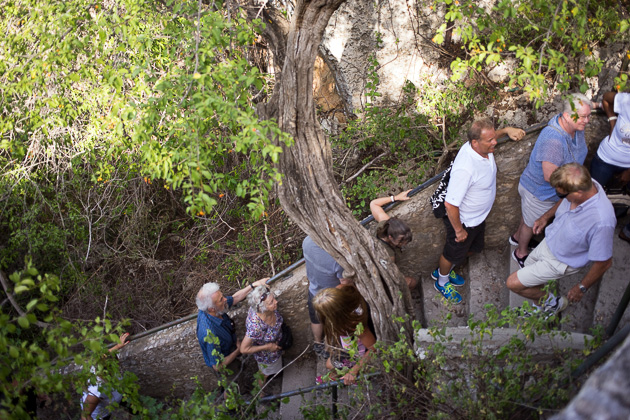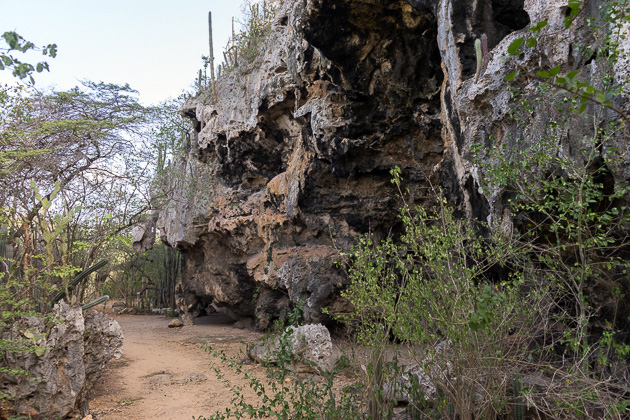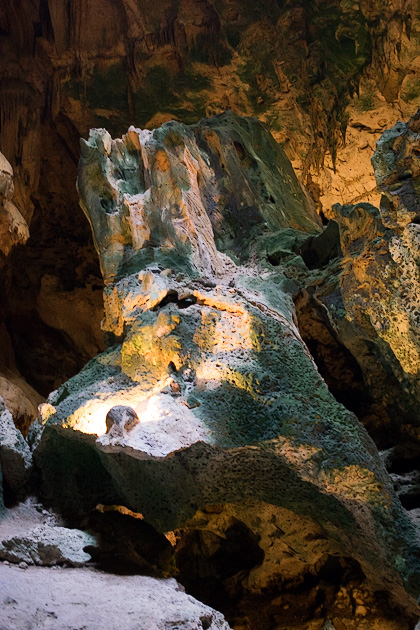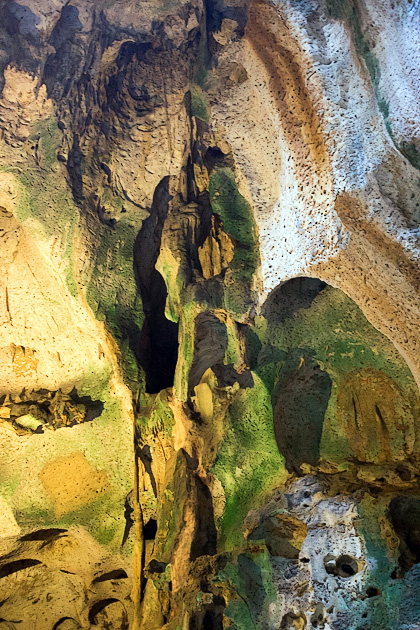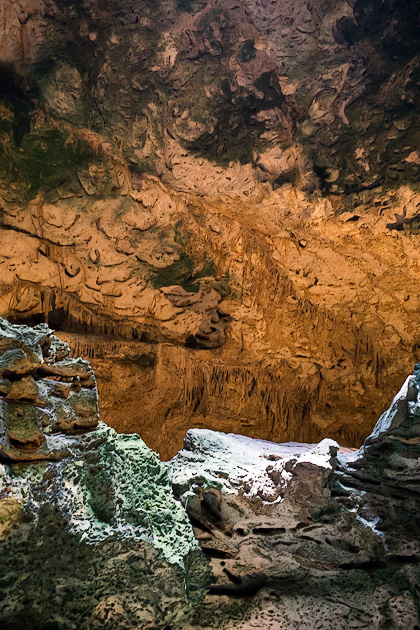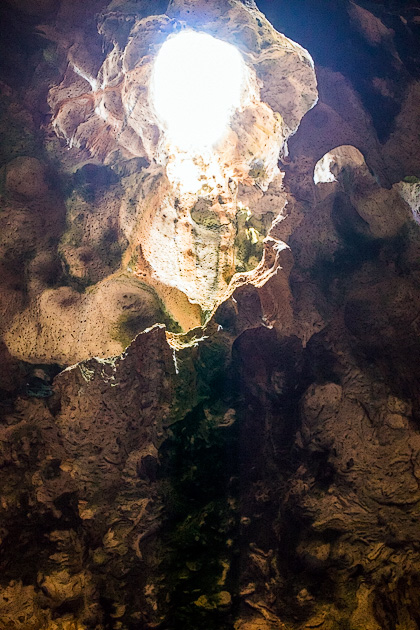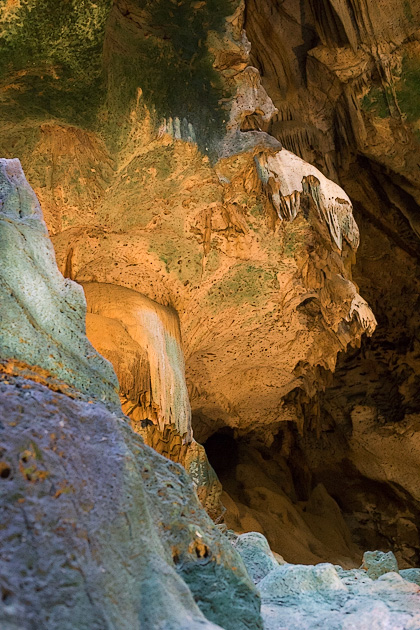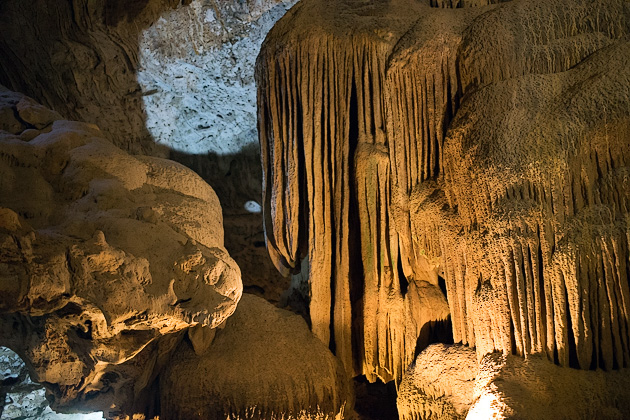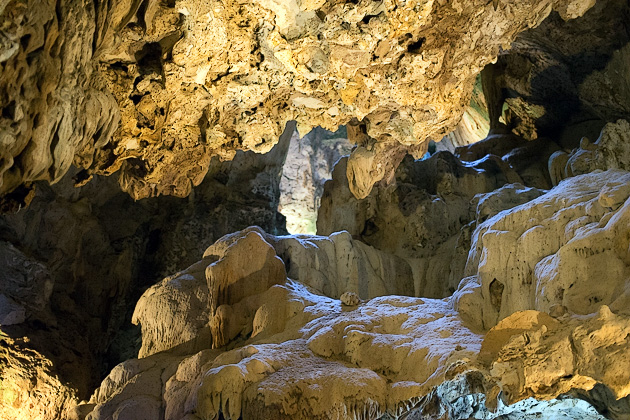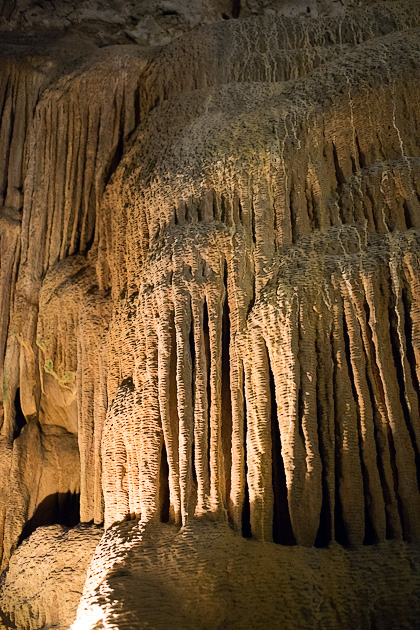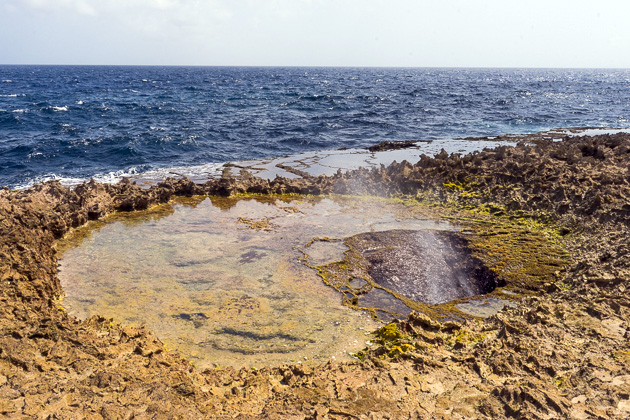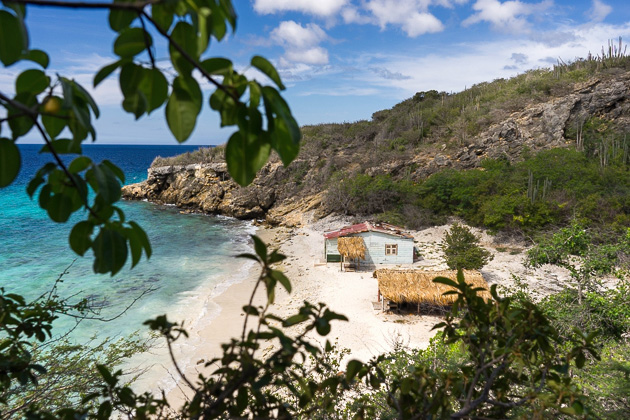The Hato Caves
Carved out over the course of millennia into the region’s limestone landscape, the Hato Caves are found next to Curaçao’s international airport. In the past, these caves served as a shelter for the Arwak Indians and a hiding spot for runaway slaves, and are now a popular tourist attraction.
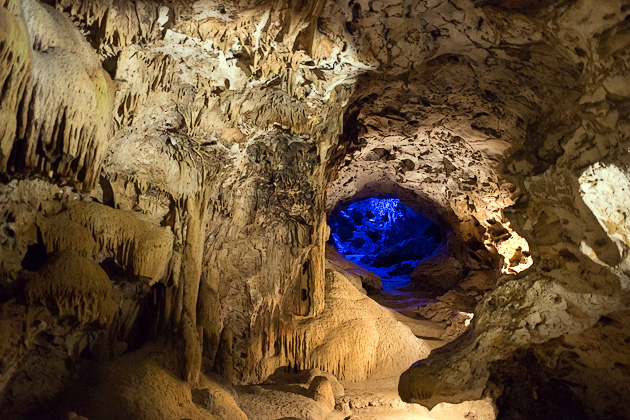
The entrance to the caves is found on a cliff terrace above the park, so the tour begins with a sharp climb up a flight of stairs. After this initial exertion, though, the rest of the visit is easy; the caves are large and well-lit, and there isn’t any crawling or risky spelunking involved.
We didn’t realize this before buying the tickets, but pictures aren’t allowed in the Hato Caves, except in two designated spots. Our guide explained that the flash might scare the bats. Immediately after giving us this warning, she shined her high-beam flashlight onto the ceiling. “Look, there’s a family of them!” And actually, yeah, the bats did look terrified of the light!
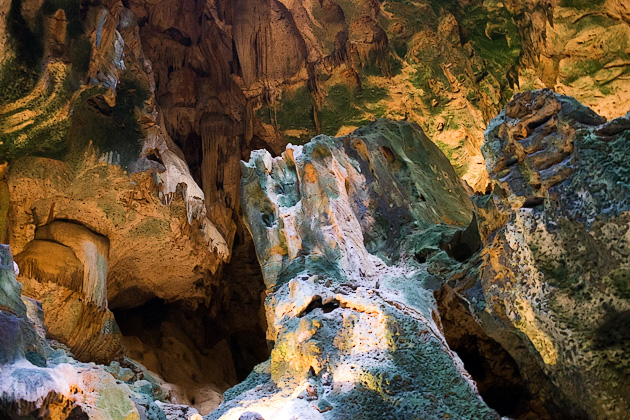
We promised not to use the flash, but she still said no. “The infrared might cause damage to the rocks, even if it’s imperceptible.” And then, she pointed out a stalagmite which, if you used some imagination, kind of looked like the Virgin Mary. “And to protect the precious Virgin, we demolished the stalactite which was dripping on it.” At this revelation, our group went into stunned silence.
It’s going to be tens of thousands of years before the Virgin stalagmite might be even slightly altered by the natural forces which forged it in the first place. Who knows if Catholicism will even be around then? But remember: no infrared from cameras, because we must protect the integrity of the caves.
Outside of the cave, there’s a cafe-bar, as well as a forgettable “nature walk” into the woods, at the end of which are supposedly some ancient Indian wall paintings. But despite our best efforts, we were unable to say whether the faded marks we spotted were paint or grime.
The tour needs some work, but the Hato Caves are worth visiting. It’s a perfect activity for families, or for those looking for an easy nature experience. The caverns are spacious, but not all that expansive, and the slow-moving tour only takes about a half-hour.
